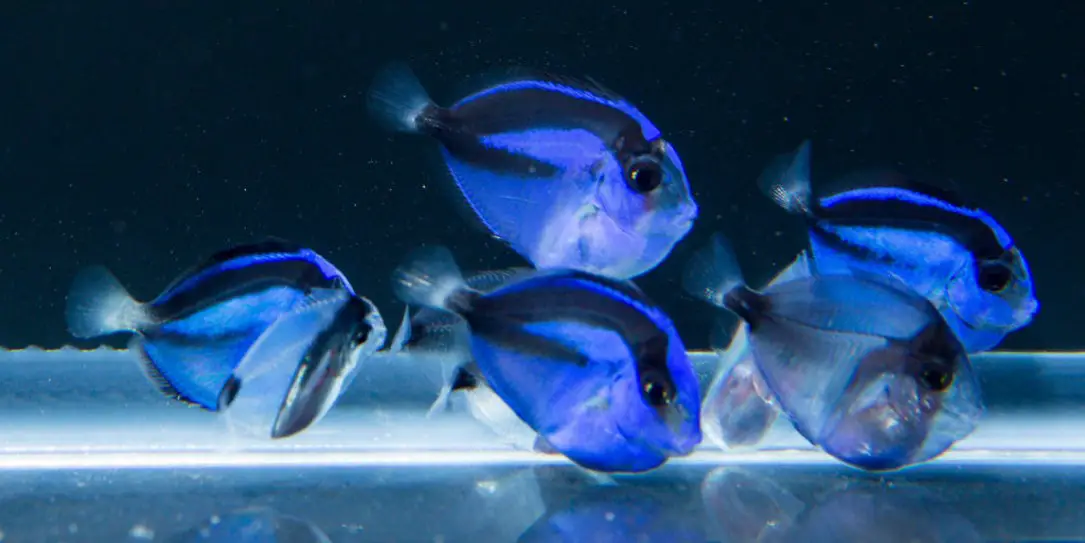Movies, and Disney movies in particular, have a habit of making certain things popular. That isn’t always an issue, since oftentimes there are action figures, shirts, books, and more to sate the appetites of fans. It can be more problematic when the popular things are animals. Popular animal characters in movies or tv shows can cause huge spikes in popularity. In some instances, that isn’t a problem, as many animals can be safely and easily bred to fill demand. Finding Dory has the potential to create increased interest in the Pacific Blue Tang (Dory), and up until recently that could have been a problem.
When Finding Nemo was released, there was a huge increase in popularity for clownfish. That demand could be easily filled because clownfish are easy to breed in captivity. Some scientists worried that Finding Dory might cause a similar increase. This would be a problem for the Pacific Blue Tang, since these fish had never been bred in captivity. Scientists at the University of Florida announced that they were successful in breeding Pacific blue tangs for the first time. Most aquarium fish are difficult to breed in captivity — only 12% – 15% are usually successful — the Pacific blue tang’s breeding and rearing is especially tricky.
The first part is pretty easy though. Pacific Blue Tangs lay a crazy amount of eggs, and those eggs hatch after only one day. After that it starts to get tricky…
In the first two days of their lives, the hatchlings are suspended in their yolks and terribly tiny — a little bigger than the thickness of a sharp pencil point. They’re eyeless, mouthless and fickle too; the water must be an exact temperature and quality. And though their parents have long abandoned them, malnourished parents produce hatchlings with a shoddy yolk — so they’ll die.
In their early experiments, nearly all of the eggs would die within those first few days, but with some work, they were able to get 80% of the eggs to last up to four days. From there they still weren’t quite out of the woods though.
A little older, tangs remain fragile. Their bitty mouths can’t eat food that’s more than 50 microns — the diameter of a strand of thin hair. Researchers then had to figure out how to raise millions of baby copepods, Watson writes, which are tiny crustaceans that many sea creatures eat.
After those first few days, researchers were left with just over 100 larvae. That might sound impressive, but they started with around 50,000 eggs. There’s still a huge chance of failure in this process, but progress is being made. Of those 100 larvae, researchers were left with 27 viable Pacific Blue Tang. Though those that remain have made it through several very important plateaus. July 4th marked 40 days, and more recently, on day 51, the fish began to resemble their namesake and started turning blue.
The researchers were thrilled, in spite of losing the vast majority of the original eggs. Since they were able to successfully breed some of the fish, that means their process works, and it can be refined and improved in future batches. Breeding and raising these fish to fill demand will prevent the fish from being captured in the wild. The fish are not at risk, but the means in which they are captured can damage the reefs where they live. The reefs themselves are, however, at risk.
If your kids really want to bring Dory home after seeing her movie, you may soon be able to get a responsibly bred Pacific Blue Tang of your very own.
[button link=”http://risingtideconservation.org/first-successful-aquaculture-of-pacific-blue-tang/” icon=”fa-external-link” side=”left” target=”blank” color=”285b5e” textcolor=”ffffff”]Source: Rising Tide Conservation[/button][button link=”https://www.washingtonpost.com/news/morning-mix/wp/2016/07/22/after-finding-dory-scientists-present-farming-dory/” icon=”fa-external-link” side=”left” target=”blank” color=”285b5e” textcolor=”ffffff”]Via: Washington Post[/button]









